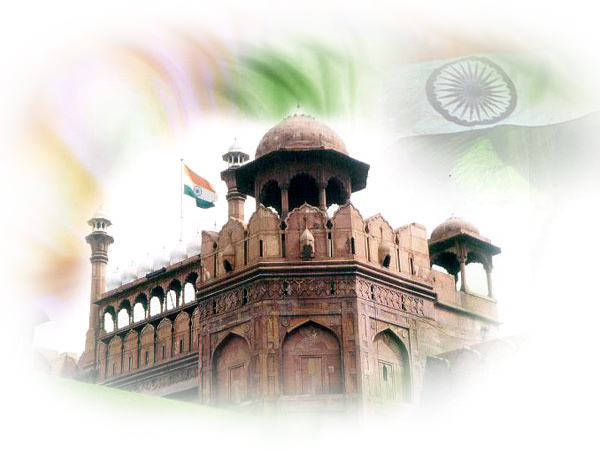How the freedom struggles of India gave Goa her liberation mojo
In 1946, pills while the British sat down with Nehru and Gandhi and carved out a plan for Indian independence, Ram Manohar Lohia, among India’s most revered national leaders, arrived in Portuguese Goa, invited by Julio Menezes, for a much deserved rest from the Quit India movement.
Lohia’s arrival in Goa sent waves of reaction throughout the state. The languid movement for Goan freedom, muted under the domination of the colonialists, received a sudden charge of optimism. Fired up and inspired by the presence of a national hero on the ground, the movement came out from the underground and spilled on to the streets.
It would take 15 more years before the sparks lit in those early days would usher in Goa’s actual freedom. But there’s no denying that India’s independence struggles, as much as anything else, fueled the parallel yearnings of the people of Goa.
Today, feelings are decidedly mixed among Goans about what it means to be Indian. And yet it’s clear that Indian nationalism has taken root here – a land whose people enjoy cricket and Bollywood and football and fado with equal gusto.
Whatever one feels about the union with India, the experience of being both Goan and Indian is a decidedly colourful one. And it seems clear that had it not been for Lohia’s visit and a host of other events involving India, we may never have found our freedom.
Back in Portugal after Lohia’s visit, a paranoid Salazar gave orders to tighten his grip on Goa. Civil liberties were clipped. Public meetings were banned, freedom fighters were jailed, and voices muzzled.

And yet Lohia’s presence among Goa’s own freedom fighters like Purushottam Kakodkar and Vasant Kare galvanized a dormant movement to the point where a public meeting was held on June 18, 1946, in Margao. Lohia was arrested before he could say a word. As was Vastsala Kirtani, all of twenty-one years of age, for shouting Jai Hind.
The National Congress Goa was formed under Ram Hegde as a direct fall-out of the June 18 meeting.
Goa and Goans were poised to be liberated, along with Bharat. But when August 15 1947 came, no army came for Goa.
“Goa is a small pimple on the face of India, which can be cleared any time,” said Jawaharlal Nehru infamously, winning few friends in the small territory.

Keen to project himself to the world as a peace-maker, Nehru refused to send troops to liberate — or annex – Goa, depending on how you choose to look at it. Despite numerous pleas from Goans, and a contingent of names, now legendary, including Bertha Menezes Mascarenhas, Fr. HLO Mascarenhas, Pushottam Kakodkar and Joaquim Dias traveling all the way to New Delhi at risk of severe sanctions upon their return, Nehru remained steadfast.
It was DK Singh, India’s Defence Minister, who in 1961, and without the knowledge of the prime minister, finally sent in troops to liberate Goa. It took soldiers less than 24 hours to gain control. The Portuguese signed a surrender in Vasco, at 8:30 PM, on December 19, 1961.
So it’s a funny sort of independence feeling here in Goa, considering that we weren’t really independent at all that August 15, 1947. How does one feel about this anomaly, I ask Prajal Sakhardande, professor of History at Dhempe College of Arts and Science, Miramar, and the chronicler of the facts above?
“For us, the post-liberation generation, for us it is independence,” he says simply. “Independence of the country.”

For those who were born before the Liberation, the feelings are more poignant. Prakash Sakhalkar, the owner of a Café Prakash in Panjim, recounts to Goa Streets, how, the day after Liberation, Indian troops who occupied many historical buildings in the capital, refused to accept food from locals until the locals ate first, to prove it wasn’t poisoned.
It was a tentative time, and for many Goans, the merger with India is still tentative.
“Independence for what?” demands a local octogenarian from Margao. “Have you seen the state of Goa since your so-called ‘Liberation’? Independence to shit on the streets, to beg, to dirty my home, that is what Independence Day is celebrating?”
Such hostile reactions are not rare among Goans. Even those who think of themselves as Indians resent the gradual takeover by “migrants” from the rest of the country. They bemoan the perceived loss of cleanliness, safety and faith in the system prevalent during Portuguese times.

Others, of course, don’t see it that way, expressing pride at being Indian and dismay at all those who wax nostalgically about the Portuguese. “Do they want to be ruled by whites forever or what?” spat one such red-blooded young Indian, also from Margao. “They are shameless, and will always remain slaves.”
It’s not hard to identify what Goa has given to India, from the Mangeshkar sisters Lata and Asha to the former Chief of Staff of the Indian Army Sunith Francis Rodrigues to the poet Dom Moraes to cartoonist Mario Miranda to musician Remo Fernandes to fashion designer Wendell Rodricks. Then there’s the strategic bases Goa provides to the Indian armed forces, and the breath of fresh air we give to all those visitors yearning for a break from the concrete jungles of the rest of India.
But what has India given to Goa? We can start by listing Goa’s achievements since joining the Indian Union. Average per capita income in Goa stands at Rs 1.92 lakh versus the national average of Rs 0.61 lakh, making Goa India’s wealthiest state. Only a third of Goa’s population was literate at the time of liberation. Today, the figure stands at nearly 90 percent.
One could argue that we would have achieved these things with or without India. And yet we do know that Goa benefits from being part of India in myriad ways – from hosting some of the country’s most important events to our ability to tap into one of the world’s largest markets.
It is true that hundreds of locals queue outside the Portuguese consulate each day, looking to escape. Yet the feelings of those who remain range from deep despair to exuberant optimism, and every shade in between. For some, the Goa of their ancestors has been destroyed. “It is RIP Goa,” is a frequently chanted moan. For others, Special Status, a demand among certain factions of Goans, holds a tiny ray of hope. Still others rejoice in the merger with Mother India, and believe India will make great strides, and take Goa along with her.
As diverse as the emotions may be, the freedom to express them was sowed in India, at the hands of Goa’s liberators, on August 15, 1947




